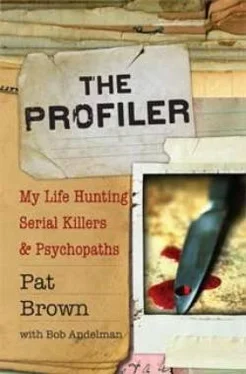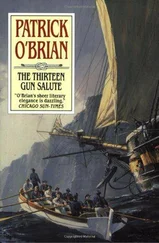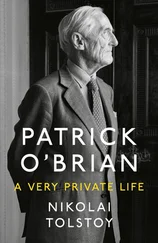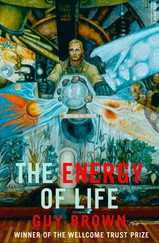If I took a wire starting at the butt of the gun and threaded it down the barrel, wouldn’t it blow off the back of the victim’s head? Why did the front of his face get blown out?
If you don’t understand how a shotgun works, you might misinterpret the blood spatter evidence. Most of us are much more familiar with how a handgun works. Usually, when you shoot a handgun, the bullet sails out in a straight line.
Brian, however, used a Remington 870 Express Magnum twelve-gauge shotgun. He used a shell that contained dove and quail shot, lots of little pellets with a bunch of powder propelling them. Basically, instead of a bullet tearing through the head in a straight line, a bomb is launched into the brain. Once that is accomplished, it explodes, and blood gases come into play. They expand, just like a bomb, and the gases move more easily against the places of least resistance. The skull is pretty strong, but the nose and eye sockets are permeable cavities, so Brian’s face exploded but his skull remained intact.
This ballistics issue was one of the things that confused everybody. The family didn’t understand this, and I didn’t understand this, not having a great familiarity with shotguns and shotgun blasts early on in my career as a profiler. Oddly, the first shotgun expert I approached didn’t appear to understand the physics of shotgun ammunition, either. Fortunately, I found a much wiser, more experienced ballistics expert, and he thoroughly explained it.
Now I was contending with determining from where Brian could have been shot. Could he have shot himself in that position? The family believed the shooter might have been in the backseat. That, they believed, was how blood traveled toward the front. The police never addressed the issue.
I purchased the exact same shotgun from Walmart. The next day, I was planning to take a trip, and I was in a luggage shop trying to buy a new bag, and they wouldn’t accept my credit card.
I called the credit card company while I was in the store, and they said, “There were some unusual purchases with your card. Did you go to Victoria ’s Secret?”
“Yes.”
“And did you purchase a shotgun yesterday at Walmart?”
They must have thought Bonnie and Clyde were on the run again.
I HAD TO find a car with the same dimensions and seat heights as Brian’s. Luckily, I had a big old car in my yard that did fine as a stand-in.
You have to reach really far to pull the trigger on a shotgun. Sometimes people use their toes to push the trigger when they kill themselves; some people use a stick. Brian would have had to pull the trigger with his own hands. Could it be done while he sat behind the steering wheel with the gun on the seat?
I’m five foot seven. Brian was four inches taller than me, five foot eleven.
I was able to reach the trigger on the gun I bought at Walmart and was able to push it with my thumb. That proved to me right away that Brian could have, but it didn’t prove that he did. It also showed me that when I went to push the trigger on the gun-because of the way I had to reach-my head was in exactly the right place for the blood spatter pattern shown in the crime scene photos. Another very important clue had to do with where the wadding inside the shotgun shell ends up. While pellets may disperse, the shotgun wadding will continue on its trajectory, in a straight line. The shotgun wadding was in the left parietal lobe, in the posterior region of Brian’s brain. In order to push that trigger, I had to turn my head to the left and lift my chin in order to get in a position where I could stretch my body and arm enough for my thumb to contact the trigger. And sure enough, if you put a rod along the barrel of the gun that ended under my chin and you pushed that rod straight through my head, the rod would pierce the parietal region of the brain exactly where the wadding ended up on Brian. More fascinating, my face shifted up and a little bit toward the driver’s side window, which was exactly where the exploding blood gases caused all the blood coming out the front of Brian’s face to land.
It sure looked-if he was sitting in that seat-like he could have pulled the trigger, and the wadding in Brian’s head and the blood spatter proved it.
But I wanted to make really, really sure that there still couldn’t be another angle at which the gun could be held, by someone else, that could explain the blood and wadding evidence.
I wanted to hold the shotgun up to somebody’s head in that car and see with what angles the shooter worked, so I said to my son, “David, do you mind coming outside and getting your head blown off?”
And he said, “Okay, Mom.”
(Of course, the gun was definitely not loaded.)
We looked around and hoped nobody was watching. I had a boarder at the time and naturally, he returned home at exactly the time I was in the car holding the shotgun to my son’s head.
“Don’t worry,” I said, “nothing’s going on here. I’m calm. I’m just blowing my son’s brains out.”
I climbed in the backseat and aimed the gun in different directions, trying to get his head in the right place. I immediately had trouble getting the gun over the top of the backseat to put it in the correct line. I tried getting him to look back at me like he was saying, “Hey, guys, what’s up back there?”
I tried all kinds of methodologies, moving my son’s head in different directions, and found that there was no realistic way from the backseat that I could get that shotgun to line up properly with the evidence.
I went around to the front seat and sat in the passenger side, which was the only other possibility. I tried from that side, and found it was possible to do it from the front. Brian would have had to have been asleep, passed out or so drunk that his head was just lolling against the headrest and he wasn’t paying a bit of attention, and the person with him in the front seat would have had to hold the shotgun in a funny fashion, the passenger door open and his right elbow sticking out in front of him. But he could do it. It was possible, but only if Brian’s head was waaaay back and he didn’t have time to push the gun away.
I made a mental checkmark that maybe it could have happened that way. But did it happen?
BRIAN HAD BEEN hanging around with a couple of no-good characters. They were involved in Dungeons & Dragons stuff and other role-playing fantasy games. That, in and of itself, didn’t mean anything, but they were into negative, evil, dark things, and Brian had talked about moving on from the group because they weren’t healthy for him to be around.
One of those guys said something strange later on when a private investigator hired by the family talked to him. He knew what Brian was wearing the night he died; he even purported to know what music was playing in the car when Brian died.
The family was convinced these friends took Brian into the mountains and killed him. But this would have required two cars, because obviously they left the scene, which was a remote location. I wondered why, if they wanted to kill somebody, they would drive two vehicles to a site so far into the hills. It would be easier just to drive his car down the block, shove him out, and blow him away. Furthermore, it was clear Brian drove himself up there. He was in the driver’s seat of his own car. His body wasn’t placed in the vehicle later, even though the family had this idea that somebody had changed his clothes, put someone else’s shoes on him, and put strange tobacco in his pocket-things that made no sense in the crime. No one would do that, but families, when they see some oddity about a crime, something that they don’t equate with their child, will deny what’s right before their eyes. The Lewis family said, “That wasn’t the chewing tobacco that he used,” “He would never leave his pocketknife at home,” and “Those aren’t his shoes.”
Читать дальше












